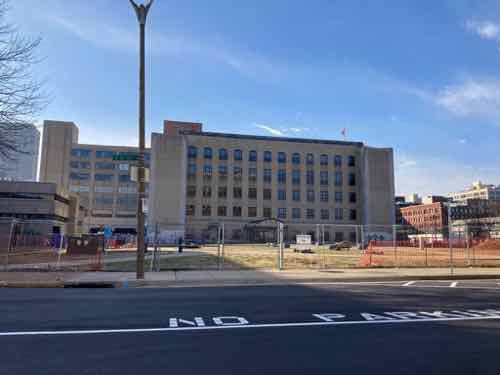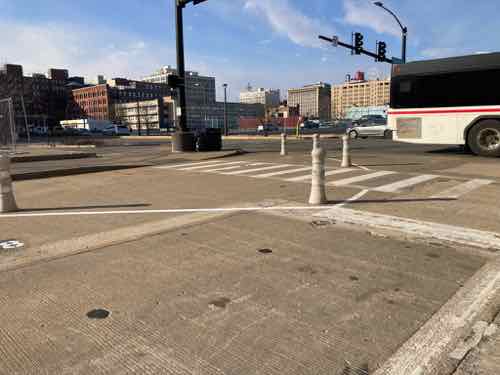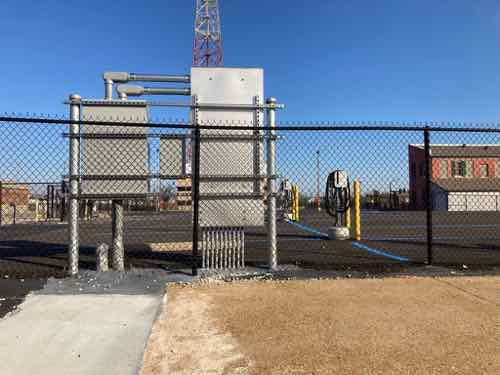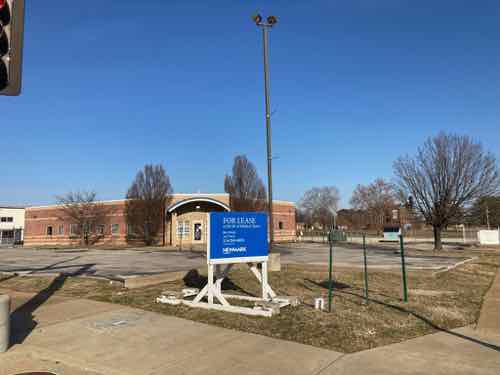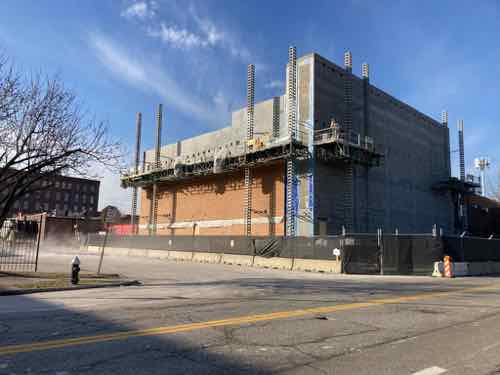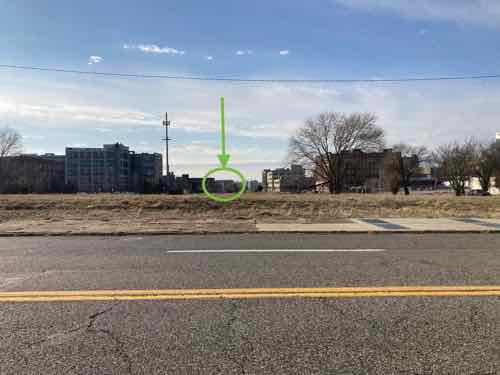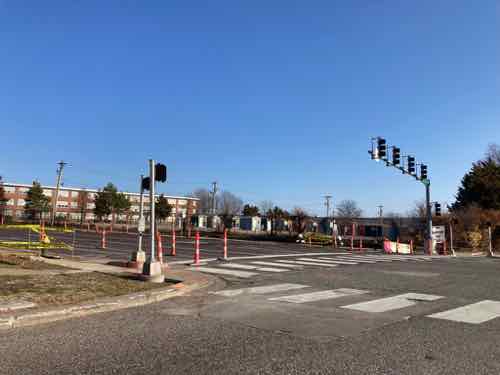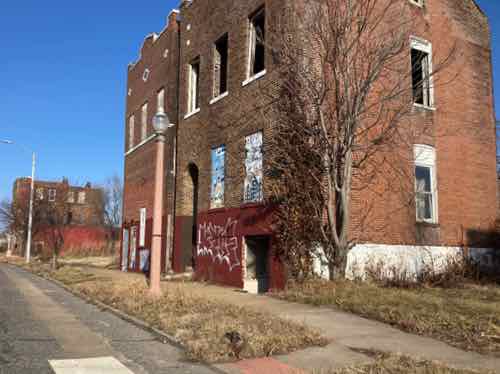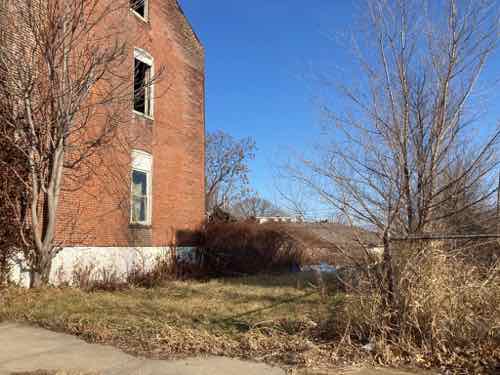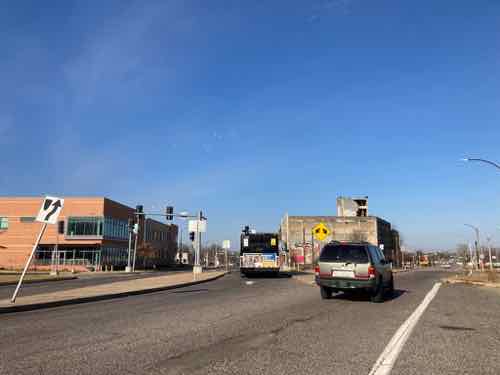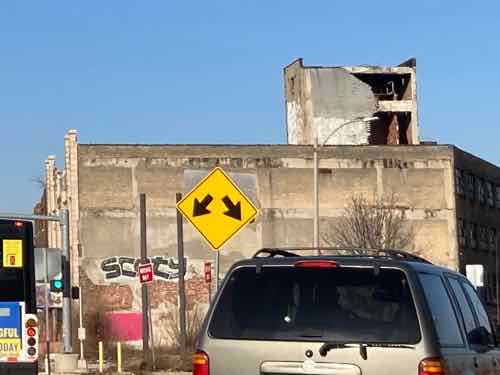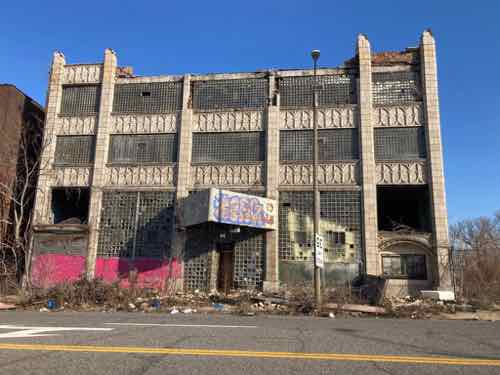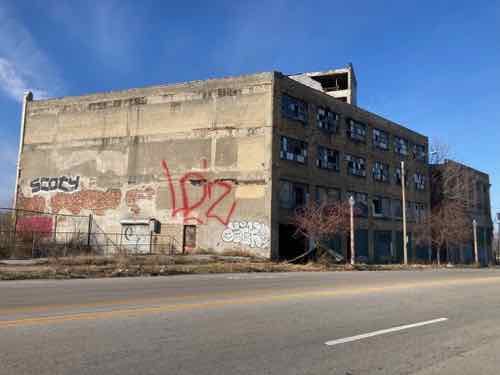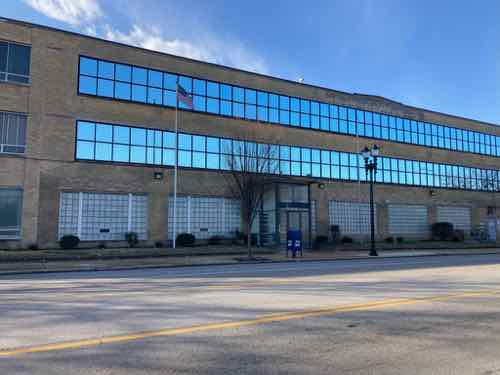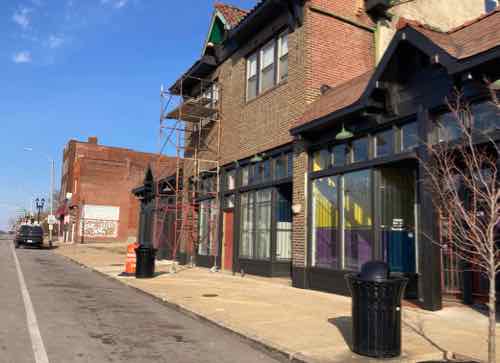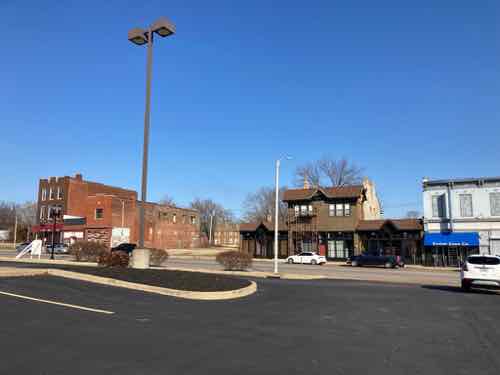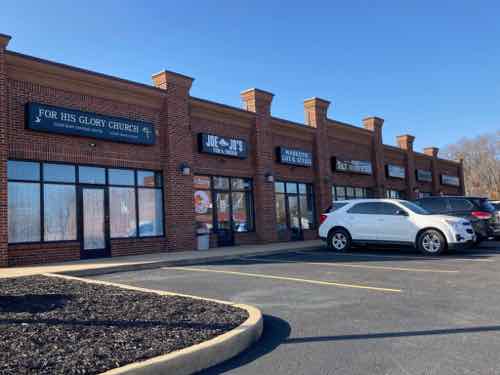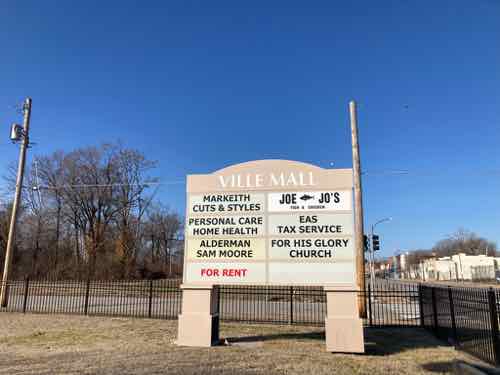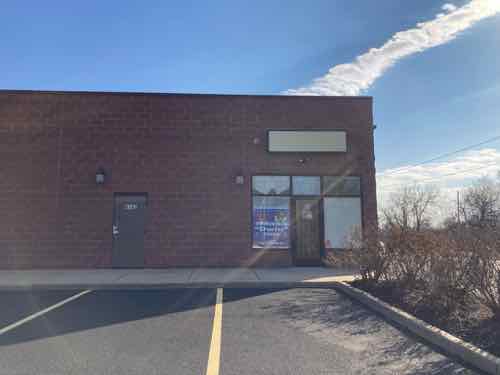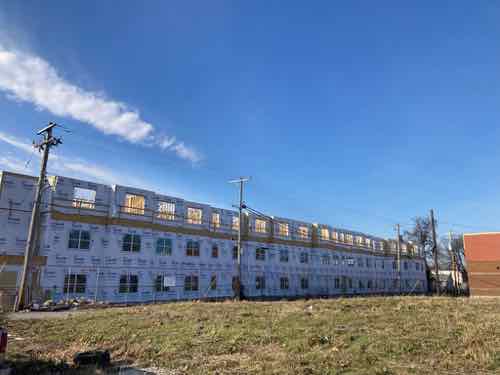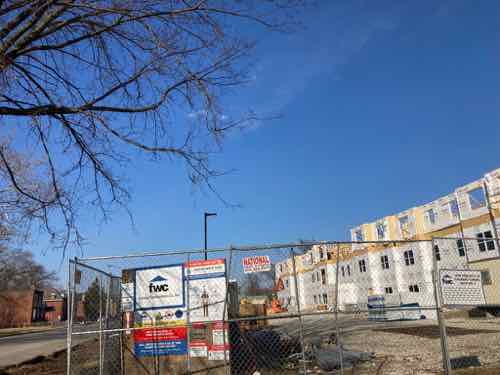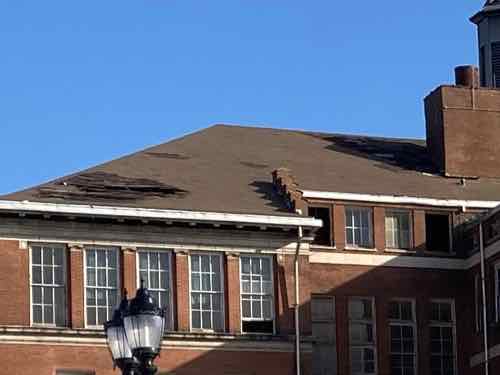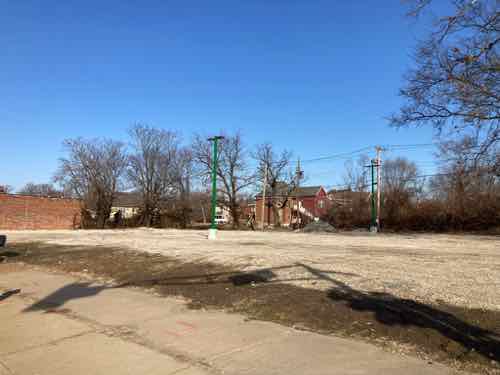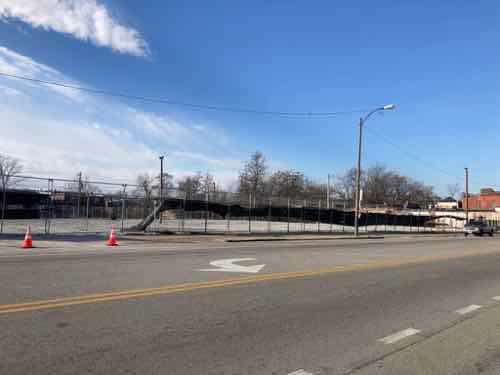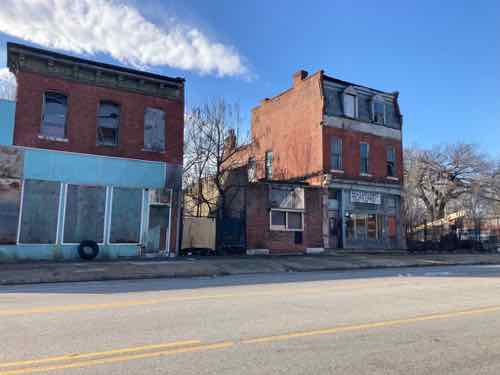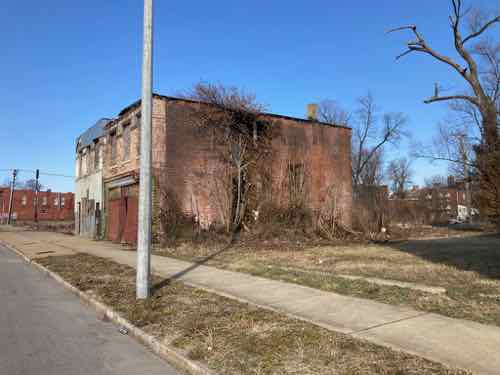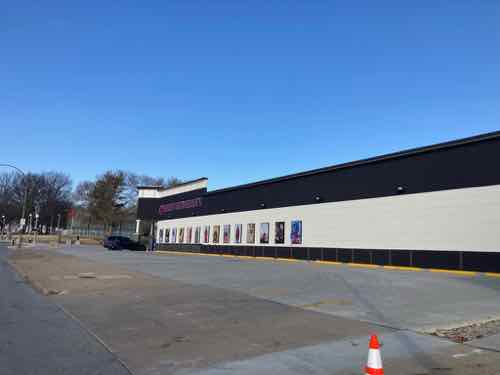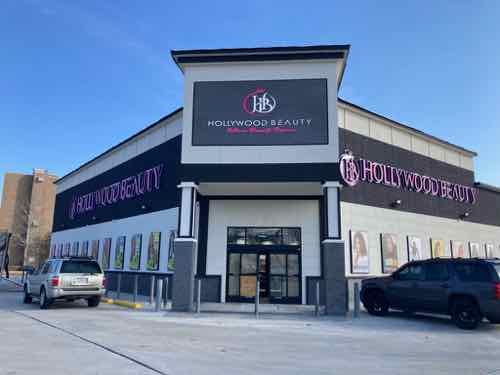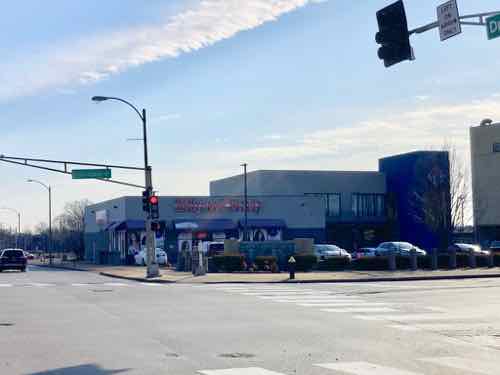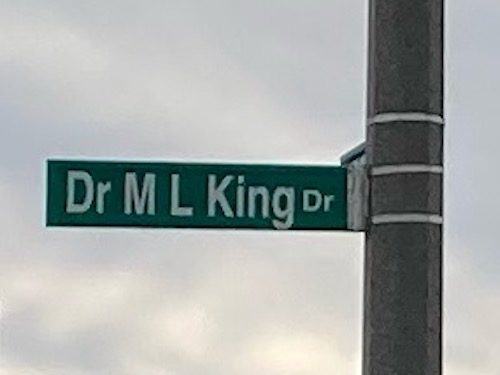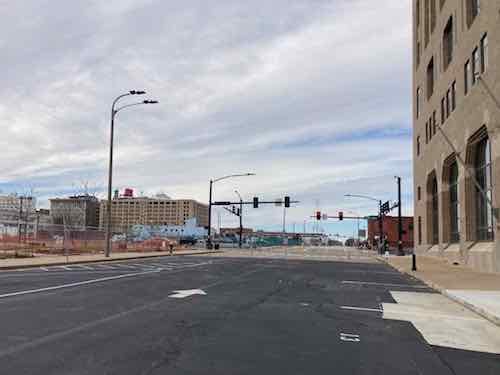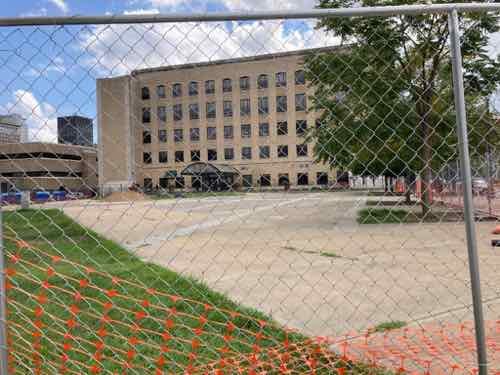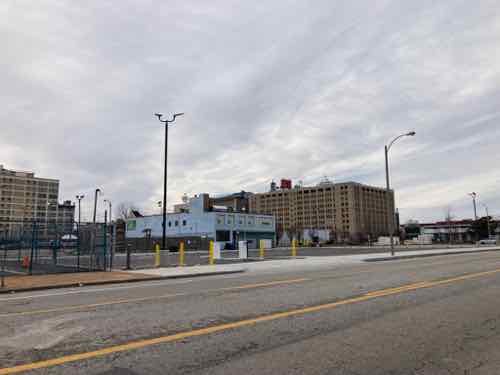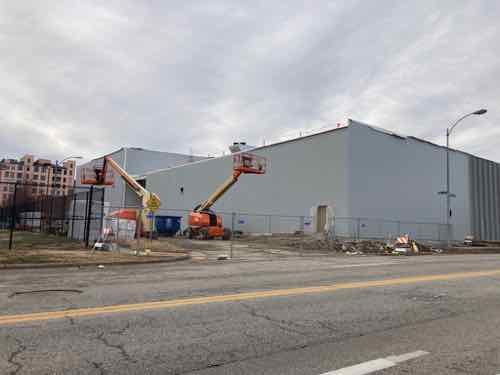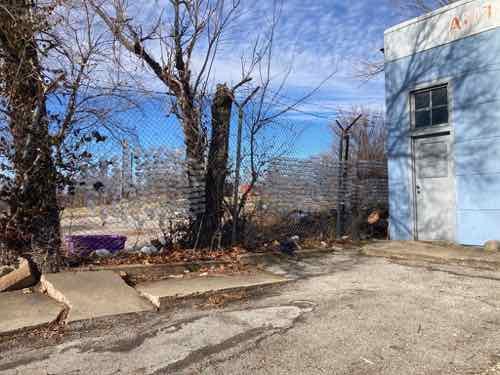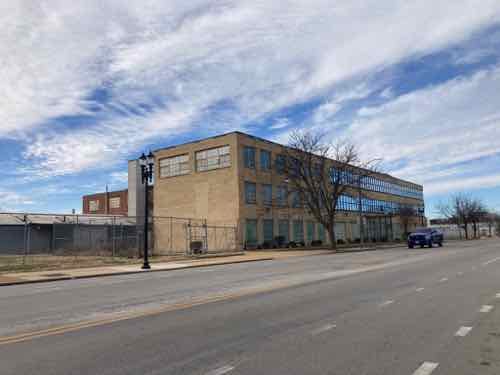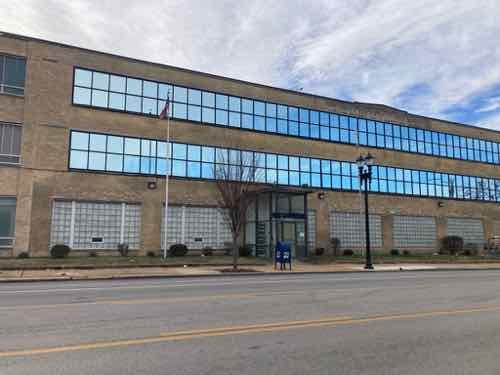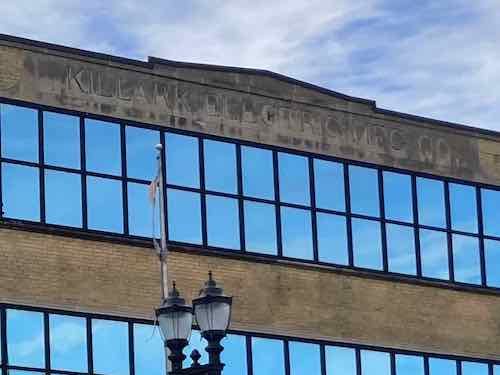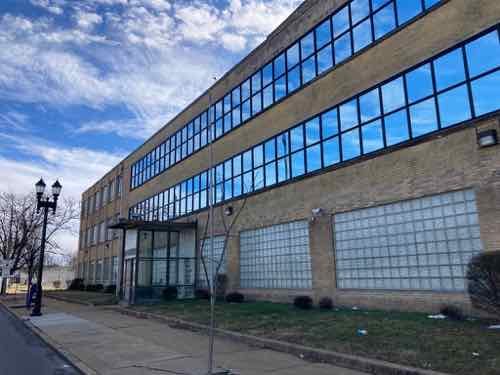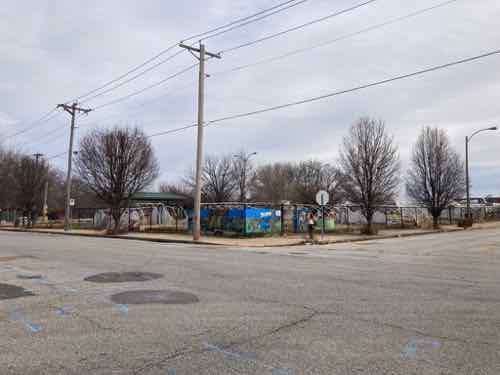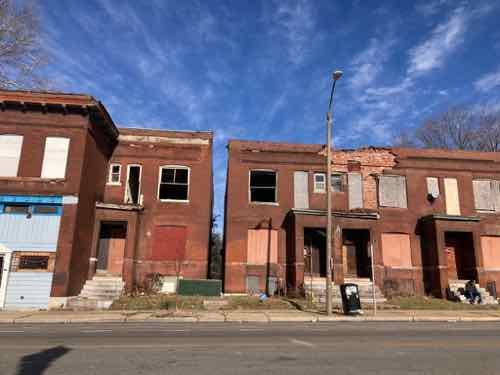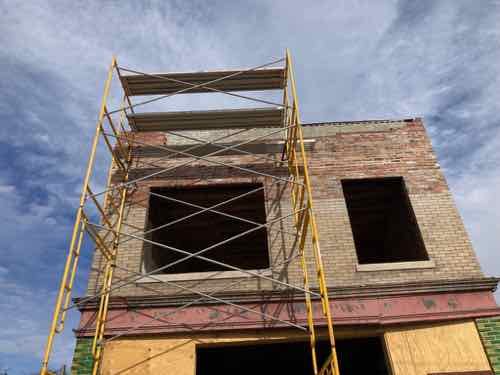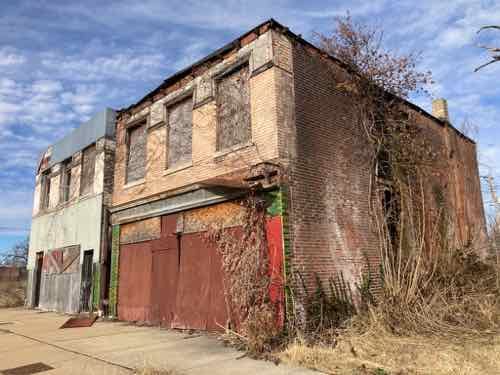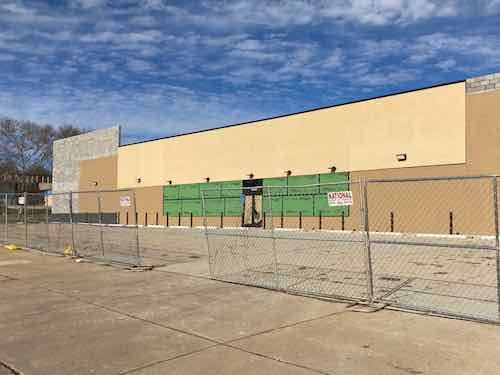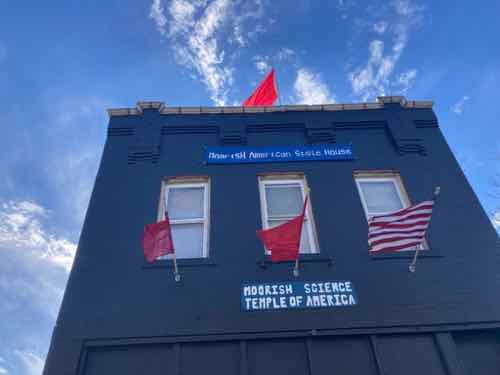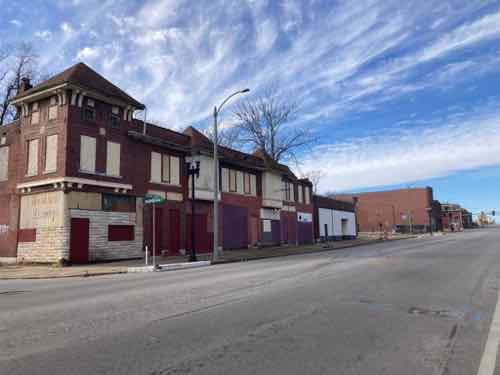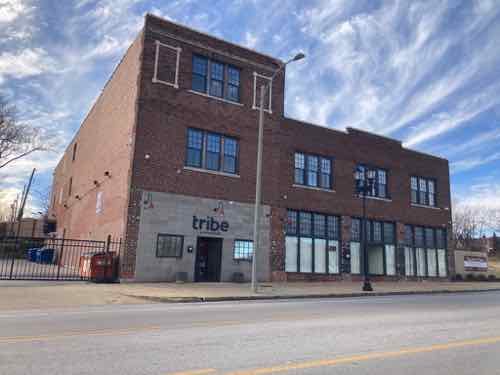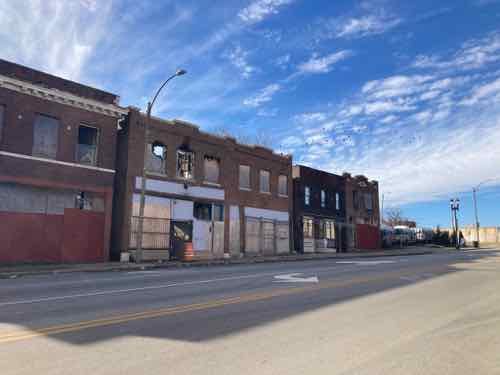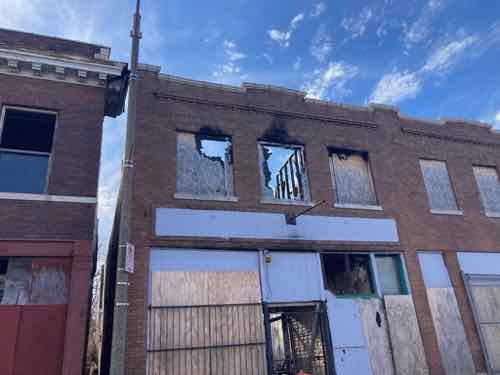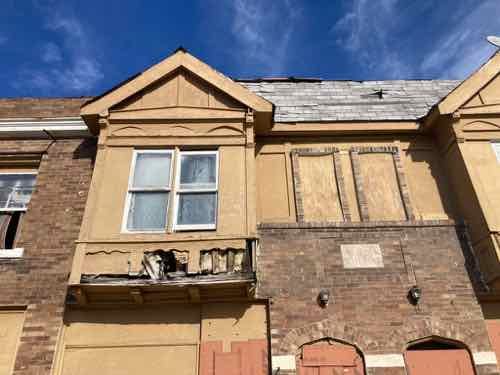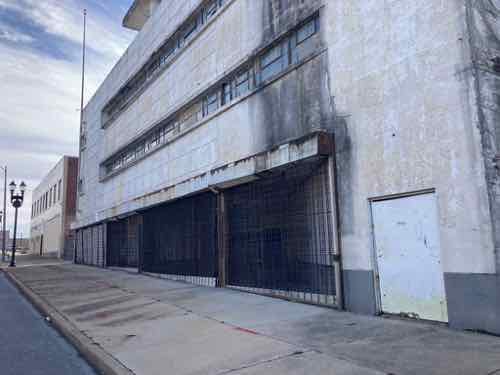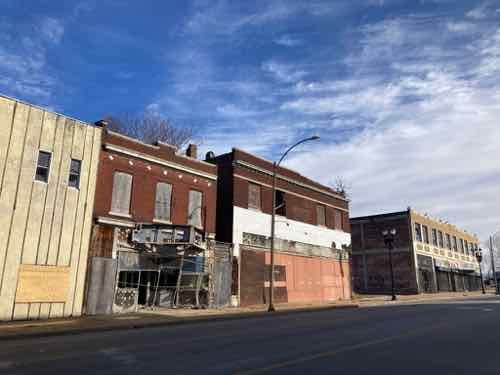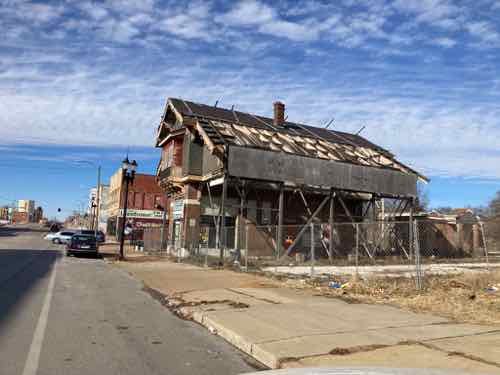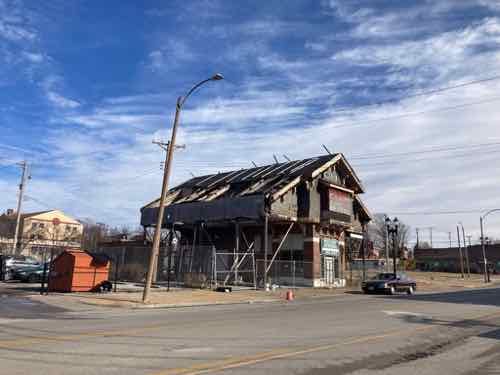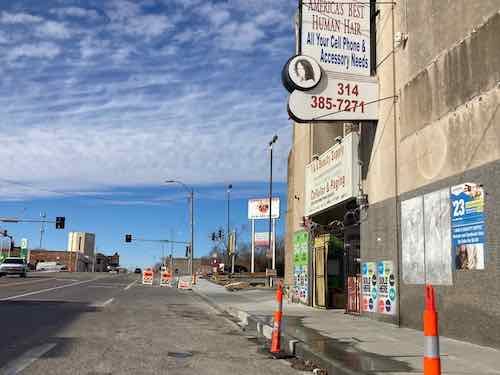Homeless-Staffed Renewable Energy Center Seeks Approval for 38-Car Surface Parking Lot
Missouri Renewable Energy (MORE), operated by Larry Rice’s New Life Evangelistic Center, is seeking a zoning change to allow them to create a 38-car asphalt parking lot in the middle of a residential block. Yes, the group that “believes in caring for creation by learning, teaching, and implementing clean energy (solar, wind, and water power, biodiesel), environmentally friendly housing structures, going organic, and consuming less” wants to put down a big chunk of paving among a residential neighborhood (see map).
 From where I stand it would seem that creating large paved parking in the midst of residential areas is not exactly “caring for creation.” Before getting into the zoning specifics of the proposed parking area, we need to look at how we got to this point.
From where I stand it would seem that creating large paved parking in the midst of residential areas is not exactly “caring for creation.” Before getting into the zoning specifics of the proposed parking area, we need to look at how we got to this point.
For decades the area in question was part of Held Florist and Nursery. The commercial building was built in the 1950s and had been used continuously as a florist since that time. However, a few years ago it stopped being used commercially and sat vacant. For decades this business had been grandfathered in — what is more technically known as a “non-conforming use.” That is, the use (commercial) doesn’t fit in with the zoning for the area (residential). But you can’t just tell a business they must close up shop when you change zoning so existing places became grandfathered in. And to permit someone to sell their property as a commercial entity the city allows that such non-conforming use can continue provided the property doesn’t go vacant for a period of greater than 12 months. But once the non-conforming use lapses for a period of 12 months the grandfather provision goes away and the zoning reverts to whatever it is for the area. Someone purchasing real estate anywhere needs to understand this very basic concept and exercise due diligence before assuming they can do as they please. Perhaps Mr. Rice got bad legal advice on this purchase?
All over the city we do have commercial properties that are in the midst of residential areas. We can’t very well expect these all to be converted to residential or razed to build residential. This small commercial building with greenhouse does have value which should be permitted to be used. But this doesn’t mean that someone can buy the building and do as they please. A nightclub, for an extreme example, in an old greenhouse could be pretty cool but not the most ideal in the middle of a residential street. The florist shop brought virtually no traffic to the area — most business was deliveries. Any enterprise that can potentially overload a residential block, as opposed to a commercial block, with too many cars at a very specific time is something which should only be permitted in extremely rare cases. I don’t think this is one.
Let’s take a look at what is proposed. The following plan was distributed by Larry Rice at City Hall a couple of weeks ago when he was to have a hearing on his request for rezoning. That decision has been delayed until October 18th which allows for a public meeting on the issue — to be held tonight (more info at the end).
The buildings shown on the plan are all existing. The area marked “demonstration area” is a greenhouse from the many decades as a neighborhood florist and nursery. The asphalt parking lot, however, is new. In fact, the only structures ever built on this land were some makeshift greenhouses. To the left is this site is the two-family building I owned from 1994-2006. Residential properties surround this in all directions.
For a moment let’s focus on the parking lot. Given the few “energy fairs” already conducted by Rice at this site it is clear they are a big draw — the street gets packed with cars of people visiting the site. But do we really want a 90ft x 113ft section of asphalt to handle cars once a month? This is certainly not very environmentally friendly.
And what about those dimensions? Rice shows 38 spaces, certainly a lot of cars. But does this work? Well, no it does not. City ordinances and common sense require certain sizes for parking spaces (view zoning code). For 90-degree spaces they need to be eight and a half feet wide and eighteen feet deep. In terms of width the idea works so far — 10 spaces across the back only requires 85 feet. But it is the other direction where we run into issues. The plan shows four rows of cars — four times eighteen is 72ft. OK, good so far but in order to do this he needs two drive lanes to actually access the parking. The city says drive lanes must be 22ft wide — each. So you add another 44ft onto our 72ft and now you are at 116ft. This doesn’t even account for required landscaping or accessible parking spaces.
The depth of the lots in this block are 142ft-6inches. Let’s say 143ft just to make it easier to discuss. So we’ve got 143ft from the sidewalk to the alley — the depth of the lot. To get his parking in there you need 116ft — leaving only 27ft. Well, the old frame house the Preservation Board (thankfully) says cannot be torn down is set a good 10ft or so back already and is likely close to 20ft deep itself. Basically, Rice’s plan doesn’t work — he is showing a paved area set at the back of the lot far from the street but the reality is to accommodate 38 cars he’d need to pave pretty much the entire section of open land — including where the frame house is located.
To complicate matters even further, a new parking lot in a residential area requires setbacks from the property lines — you cannot just pave up to neighboring property or the alley. Rice is showing 3ft at the back but nothing on the north side (to the left). Also not show is how he plans to address water run off issues — how will the parking lot be drained. Will this cause more water runoff to the neighboring property to the left? Will this cause more water to run down the alley? What is the anticipated flow of water in a storm and can existing sewers/drains handle this increased volume? These are all normal considerations when considering such a massive parking area.
In July a developer was seeking to build three houses on the land where Rice seeks his asphalt parking lot. The Preservation Board told them the old house could not be razed. They quickly sold the property to Rice. So what was his plan for his center if the new houses had been built?
For an organization that purports to be supportive of the environment to propose an asphalt parking lot is certainly a bit questionable. Water run off, as opposed to ground absorption, is an issue as is the heat island affect. Truly environmentally friendly places have pervious parking such as paving blocks or the block grid that allows you to grow grass through the paving — both allow rainwater to be absorbed into the ground. The latter doesn’t contribute to heat island issues. Impervious surfaces like asphalt and concrete are part of our environmental problem.
Some people I’ve talked to are concerned about the homeless or formerly homeless that will staff the place. I’m not concerned so much as I am puzzled. The concept is to train these individuals for jobs in the growing energy field but that seems far fetched. From a Post-Dispatch editorial from the 2nd:
We also question the wisdom of training the homeless for these sorts of jobs. “We are an agency that places 1,000 [homeless] people a year, and I’ve never heard of a placement in renewable fuels,” says Dan Buck, chief executive at the St. Patrick Center, which operates a wide range of training programs for homeless people. They are much more likely to find work, Mr. Buck notes, in restaurants, call centers, building maintenance and the like.
So while the idea of training the homeless for a career in alternative energy is appealing, I’m just not sure how practical it really is. While there certainly are exceptions, many of the homeless are not the best educated. I wonder what the extent of the training program really is? Will these persons receive any pay? How does this fit with labor laws?
And what about the production of biodiesel at the site? Rice mentions the use of waste vegetable oil being converted to use as fuel in diesel cars like his Volkswagen Jetta TDI, shown above, on the residential block where he seeks zoning approval. So my question would be what quantities of fuel might they be making at this site? Just a few drops here and there during his fairs? Or will he have free homeless labor churning out the fuel to keep his ride going? Is there a point where the making of fuel for personal use differs from the the manufacturing of fuel for the market — involving state regulation and conditions conducive to the production of motor fuels? We already have meth labs blowing up, do we need experimental biodiesel manufacturing facilities doing the same?
 Rice has intimated that if he doesn’t get his zoning he will want to use the area to house the homeless. Nice. Of course as part of the “B” two family zoning district there are numerous guidelines that, if actually followed, would make it difficult to run a shelter on the order of the one he has downtown. Even transitional housing, something the city does need, would have to conform with the zoning code.
Rice has intimated that if he doesn’t get his zoning he will want to use the area to house the homeless. Nice. Of course as part of the “B” two family zoning district there are numerous guidelines that, if actually followed, would make it difficult to run a shelter on the order of the one he has downtown. Even transitional housing, something the city does need, would have to conform with the zoning code.
Publicly there seems to be very little opposition to the energy center, the zoning changes and even the parking lot. The most visible opposition comes from the gas station a block away at Grand & Delor (see photo at right). The 25th Ward Alderman (whom I lost to in March 2005 by 117 votes), Dorothy Kirner, has reportedly written a letter of support for the project. This is interesting as she earlier opposed a parking lot for the exact same site when a Muslim church on Grand owned the land. Did Kirner apply a double standard?
Local neighborhood groups are taking a Swedish like position — publicly neutral. Privately many in the immediate area as well as throughout south city are more than a bit upset.
An informational meeting with a chance for public questions/comments is scheduled for this evening. Given all the issues and personalities at play this is a must see in my view. The meeting will be held at 7pm at Gretchen’s Inn — the one-story place behind the Feasting Fox on the corner of Grand & Meramec (see map).
I’m not in favor of large surface parking lots anywhere. I’m certainly not a fan of them on otherwise residential blocks. The parking lot should not be allowed regardless of any issues around the homeless, Larry Rice or the intended use of the property. This is just not a wise move to allow a parking lot in such an area.
Prior posts:
- June 24, 2007: Preservation Board to Hear Appeal to Raze 19th Century House
- August 30, 2007: Larry Rice’s New Life Evangelistic Center Opens Renewable Energy Center in 25th Ward
Note: Headline changed at 10:25am from “Homeless-Run…” to “Homeless-Staffed” to more correctly reflect the stated intent.


 As part of the neighborhood, Centenary Church decided two years ago that we have a responsibility to step into the tension and become part of the solution. No matter how well intended a suburban group might be, it is not a safe and healthy practice to feed people in our parks. There is no control over how the food is prepared, served, or disposed of. The homeless population risks illness and the parks suffer from trash and rodents. Centenary has a large dining hall with an inspected kitchen and lots of trash cans.
As part of the neighborhood, Centenary Church decided two years ago that we have a responsibility to step into the tension and become part of the solution. No matter how well intended a suburban group might be, it is not a safe and healthy practice to feed people in our parks. There is no control over how the food is prepared, served, or disposed of. The homeless population risks illness and the parks suffer from trash and rodents. Centenary has a large dining hall with an inspected kitchen and lots of trash cans.



 I’m going to see if Ald. Kacie Triplett (
I’m going to see if Ald. Kacie Triplett (